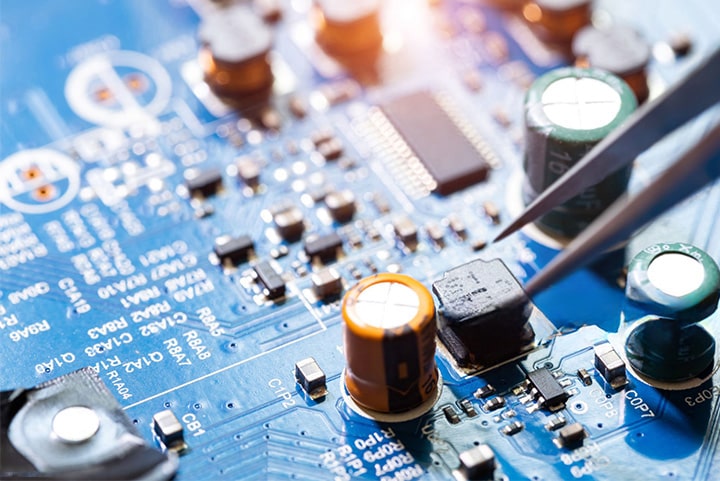What is HDI PCB
HDI PCB is a high-density interconnect circuit board used to achieve more connections and higher density in a limited space.
It is commonly used in complex electronic devices such as smartphones, tablets, and computers. It uses a series of advanced manufacturing technologies, such as micro-wires, blind and buried vias, buried resistors and inter-layer interconnections. These technologies enable HDI PCBs to achieve higher connection density and more complex circuit designs in a relatively small size

The advantages and advantages of HDI PCB are as follows:
HDI PCB can achieve higher circuit density, allowing electronic devices to have more powerful functions and higher performance while maintaining a smaller size.HDI PCB also has good maintainability and anti-interference capabilities, and is suitable for complex electronic systems and high-speed data transmission application scenarios.
The high-density interconnection of HDI PCB boards also improves the speed and quality of signal transmission, reducing the possibility of signal delay and distortion.
The differences between HDI PCB and standard PCB are as follows:
Size and weight: HDI PCBs are smaller and lighter, while standard PCBs are larger and heavier.
Manufacturing process: HDI PCB is made of traditional double-sided panels as the core board, which is laminated by continuous layers, and is directly drilled using laser. Standard PCBs usually use mechanical drilling.
High density: HDI PCB holes, lines, pad density, interlayer thickness, etc. are high-densified.
Electrical properties: HDI PCB has better electrical properties.
The characteristics of HDI PCB are as follows:
High density: The biggest feature of HDI boards is high density, which can achieve a high degree of integration of a large number of circuit components, greatly improving the performance and efficiency of the equipment.
High speed: Due to the high degree of integration of circuit components, HDI boards can achieve higher operating frequencies and faster data transmission speeds.
High precision: The design and manufacturing of HDI boards require highly precise processes and technologies, which can achieve high-precision integration of circuit components.
High reliability: The design and manufacturing process of HDI boards require strict control of various factors, such as temperature, humidity, voltage, etc., to ensure high reliability of the product.
Environmental protection: During the production process of HDI boards, the impact on the environment is minimized and meets environmental protection requirements.
HDI PCB has many application fields, especially in communications, computers, consumer electronics, automotive electronics and other fields.
For example, smartphones, tablets, servers, routers and other electronic products are inseparable from HDI boards. In addition, HDI PCB boards are also widely used in medical equipment, aerospace, military and other fields.

The development prospects of HDI PCB are promising with the advancement of technology.
There are two specific reasons:
The demand for HDI PCBs in industries such as communications, consumer electronics, automotive electronics, and medical equipment has increased significantly.
The popularization of 5G pcb technology and the development of the Internet of Things, as well as the use of artificial intelligence, cloud computing and big data technology, have increased the demand for high-speed data transmission, complex circuit design and high-performance computing and storage capabilities, driving the HDI PCB market increase.









